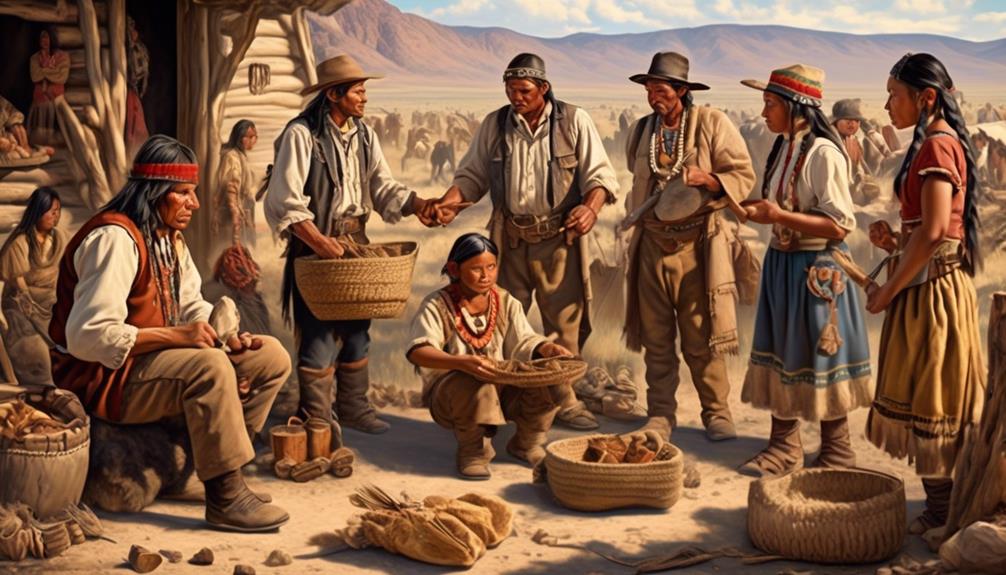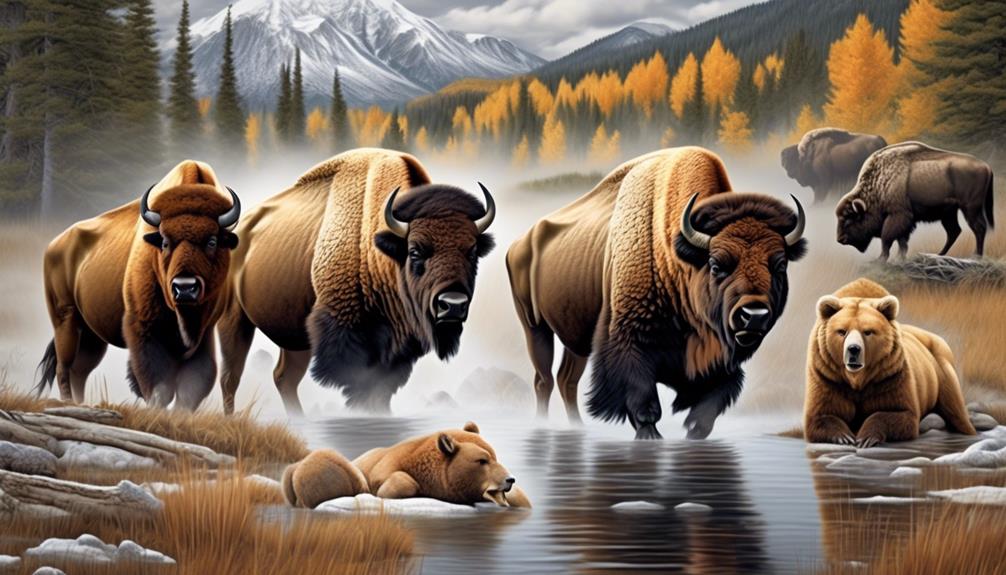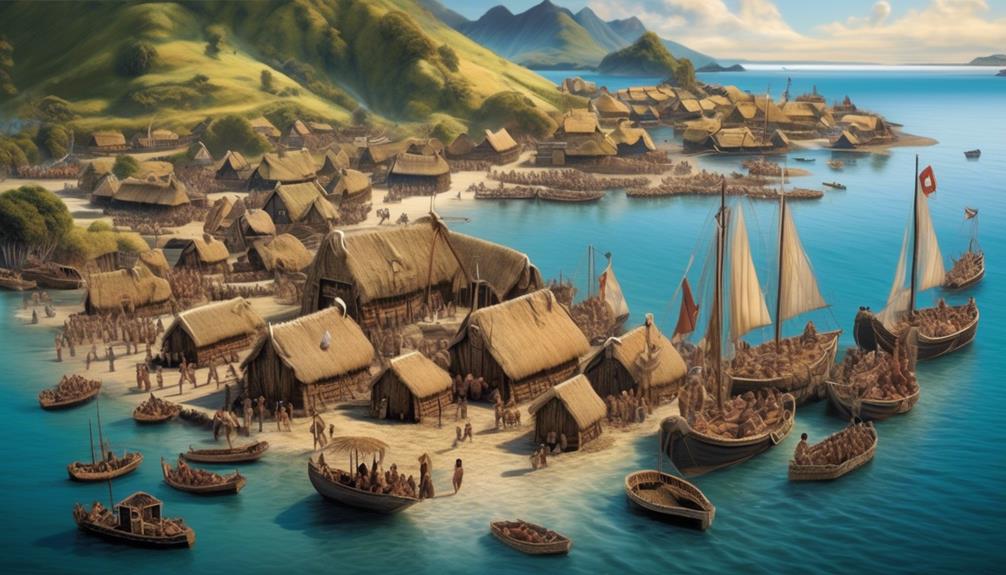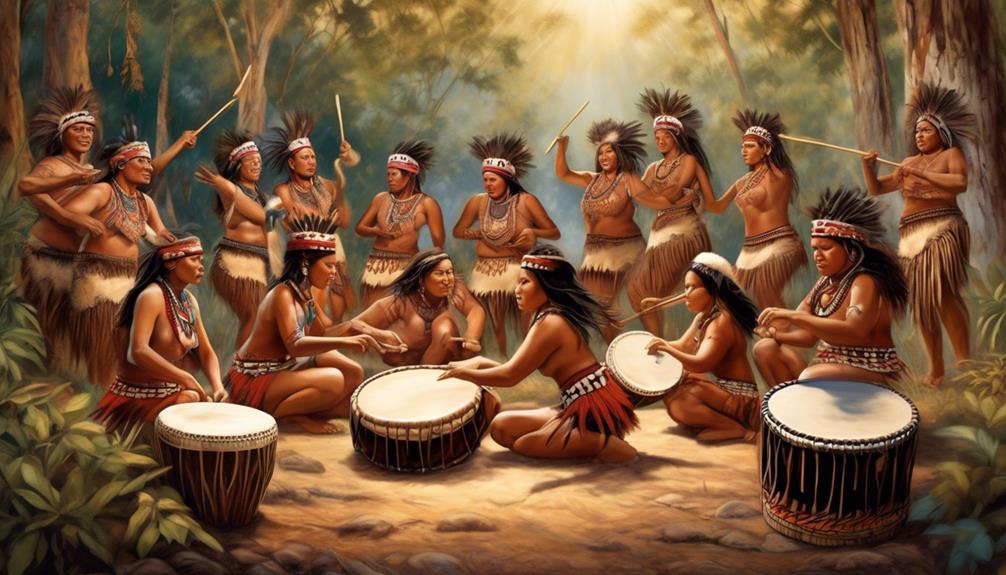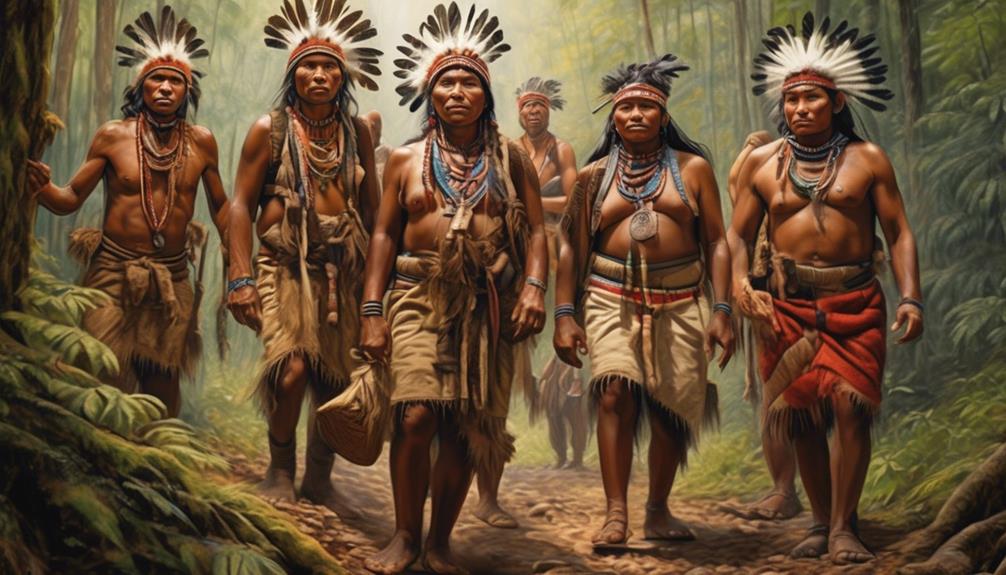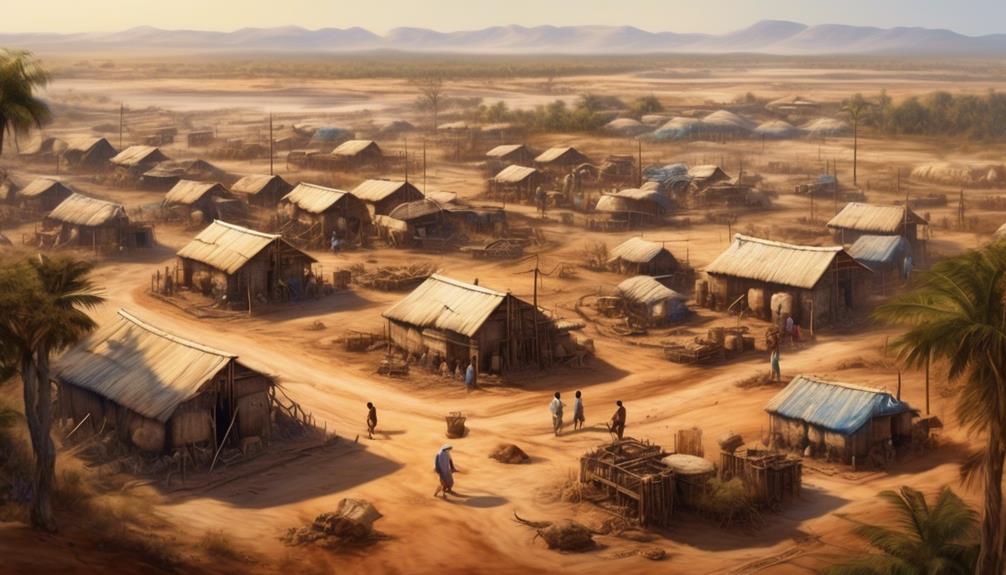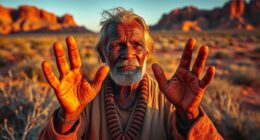When considering the profound impact that settlers had on the Native American populations in the Western United States, it is evident that their arrival brought about various alterations, some of which were positive while others were detrimental.
The intricate interplay of firearms and weaponry, the introduction of new diseases, and the spread of Christianity and religious practices are just a few of the pivotal points to be pondered.
These changes continue to shape the cultural, social, and economic landscape of Indigenous communities to this day, and understanding their nuanced effects is essential for comprehending the complexities of the historical and ongoing relationships between settlers and Indigenous peoples.
Key Takeaways
- Settlers brought firearms and weaponry, leading to a power imbalance and dependence on settlers for resources.
- The introduction of livestock and agriculture brought changes in hunting practices, land use, and cultural, social, and environmental aspects.
- Settlers brought diseases like smallpox, measles, influenza, tuberculosis, and cholera, resulting in devastating mortality rates and decline in indigenous populations.
- Settlers spread Christianity, leading to religious assimilation and cultural exchange.
Impact of Firearms and Weaponry
As settlers expanded westward, the introduction of firearms and weaponry had a profound and often devastating impact on the indigenous peoples of the region. The arrival of firearms provided settlers with significant hunting advantages, allowing them to efficiently procure food and resources. This shift in hunting technology disrupted the traditional balance of power dynamics between settlers and indigenous peoples.
The indigenous communities, who'd relied on traditional hunting methods, were now faced with a significant disadvantage in acquiring essential resources for their survival. This unequal distribution of hunting advantages led to an increased dependency of indigenous peoples on the settlers for vital supplies, further amplifying the power differential between the two groups.
Furthermore, the introduction of firearms not only altered the hunting dynamics but also significantly influenced social and political structures within indigenous communities. The traditional leadership roles and decision-making processes were challenged as the impact of firearms on power dynamics led to internal strife and conflict among indigenous groups. The devastating consequences of these power struggles were exacerbated by the superior firepower possessed by the settlers, further marginalizing the indigenous peoples in the region.
Influence of Livestock and Agriculture

The impact of firearms and weaponry on the indigenous peoples of the west significantly shifted the power dynamics, and this disruption extended to the influence of livestock and agriculture on their traditional way of life. The introduction of livestock management and new agricultural techniques by settlers had a profound impact on indigenous communities. Livestock such as cattle, sheep, and horses not only provided a new source of food and materials but also transformed indigenous hunting and gathering practices. The introduction of agriculture brought new crops, tools, and farming methods that altered traditional land use and resource management systems. This sudden transformation led to significant cultural, social, and environmental changes within indigenous communities.
| Livestock Management | Agricultural Techniques | Impact |
|---|---|---|
| Introduction of cattle, sheep, and horses | Adoption of new crops and farming methods | Shift in traditional hunting and gathering practices |
| Utilization of livestock for food and materials | Transformation of land use and resource management | Cultural, social, and environmental changes |
The integration of livestock and agriculture into indigenous societies was a complex process that reshaped their way of life and had long-lasting effects on their traditional practices.
Introduction of New Diseases
The arrival of settlers in the West brought with them a myriad of new diseases that had detrimental effects on the indigenous peoples' health and well-being, causing significant disruptions to their traditional way of life. The impact of colonization on the health of indigenous communities was profound.
Diseases such as smallpox, measles, and influenza, to which the indigenous populations had no previous exposure or immunity, resulted in devastating mortality rates. The introduction of these new diseases led to a significant decline in indigenous populations, altering the demographic landscape of entire regions.
Moreover, the healthcare disparities exacerbated by colonization further marginalized indigenous communities, as they lacked access to adequate medical resources and expertise to combat these novel diseases. The settlers' arrival not only brought infectious diseases but also imposed a healthcare system that often disregarded or undermined indigenous healing practices, further widening the healthcare gap.
Consequently, the introduction of new diseases by settlers had enduring consequences, shaping the health outcomes and well-being of indigenous peoples in the West. Understanding this historical context is pivotal in recognizing the lasting impact of colonization on indigenous communities and their healthcare disparities.
Spread of Christianity and Religious Practices
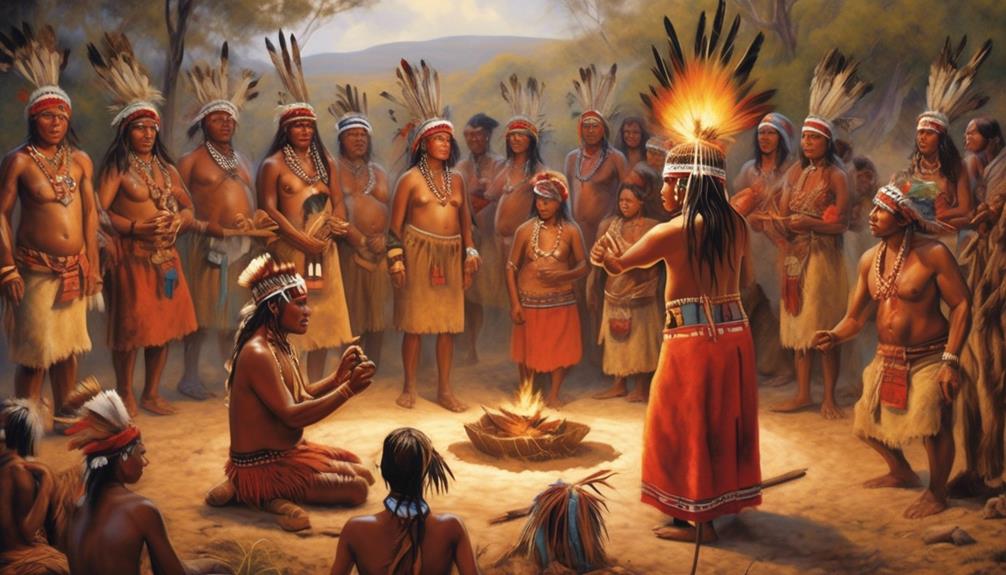
Arriving with the settlers in the West, the spread of Christianity and religious practices profoundly influenced the cultural and spiritual traditions of indigenous peoples, altering their belief systems and social structures. The introduction of Christianity led to religious assimilation and a cultural exchange that reshaped the spiritual landscape of indigenous communities. This process was often complex and involved the blending of indigenous beliefs with Christian teachings, resulting in the emergence of unique syncretic religious practices.
| Positive Impact | Negative Impact |
|---|---|
| Provided a sense of community and belonging | Undermined traditional indigenous spiritual practices |
| Introduced concepts of compassion and charity | Imposed a hierarchical religious structure |
| Offered educational opportunities through missionary schools | Led to the loss of indigenous languages and cultural traditions |
| Provided access to resources and support networks | Contributed to the marginalization of indigenous spiritual leaders |
The spread of Christianity and religious practices among indigenous peoples in the West not only represents a historical transformation but also serves as a testament to the resilience of indigenous cultures in the face of cultural upheaval.
Adoption of Western Trade Goods
Amidst the cultural and spiritual transformations brought about by the spread of Christianity and religious practices among indigenous peoples in the West, the adoption of Western trade goods became an integral aspect of their evolving societal dynamics. Cultural exchange played a pivotal role in this process, as indigenous communities integrated new tools, technologies, and commodities into their existing economic systems.
The arrival of Western trade goods initiated a significant shift in the economic integration of indigenous societies, leading to changes in production, distribution, and consumption patterns.
The introduction of Western trade goods, such as metal tools, textiles, firearms, and glassware, not only impacted the material culture of indigenous peoples but also influenced their social and economic structures. The adoption of these goods facilitated the diversification of indigenous economies, as they began to engage in new forms of trade and exchange with European settlers and neighboring indigenous groups. This economic integration not only transformed the material aspects of indigenous societies but also influenced their social interactions and power dynamics.
Furthermore, the adoption of Western trade goods led to the emergence of hybrid material cultures, where indigenous craftsmanship and traditional practices intertwined with new technological influences. This cultural exchange resulted in the production of unique artifacts that reflected the blending of indigenous and Western elements. Consequently, the adoption of Western trade goods not only reshaped indigenous economies but also contributed to the complex process of cultural hybridization and adaptation.
Frequently Asked Questions
How Did the Introduction of Firearms and Weaponry Impact the Social and Political Dynamics Among Indigenous Peoples in the West?
The introduction of firearms significantly altered the social and political dynamics among indigenous peoples in the West. The impact of firearms on social dynamics resulted in shifts in power and influence within indigenous communities.
Additionally, the accessibility of weaponry affected political structures and alliances, leading to changes in leadership and intertribal relations.
As a result, the presence of firearms had a profound and lasting impact on the indigenous peoples of the West.
What Were the Specific Ways in Which the Influence of Livestock and Agriculture Changed the Traditional Lifestyles and Practices of Indigenous Communities?
Livestock and agriculture significantly impacted the traditional lifestyles and practices of indigenous communities. The introduction of new dietary staples and livelihood transformation were profound.
For instance, the adoption of livestock led to a shift in diet, while agriculture altered their traditional hunting and gathering practices. Livestock also provided new economic opportunities, transforming indigenous livelihoods.
This shift in dietary and economic practices had a lasting impact on the social and cultural dynamics within these communities.
How Did the Spread of New Diseases Brought by Settlers Affect the Overall Population and Health of Indigenous Peoples in the West?
The impact of diseases brought by settlers significantly affected the overall population and health of indigenous peoples in the West. Traditional practices were disrupted as communities struggled to combat new illnesses, leading to detrimental changes in livelihood.
The spread of diseases resulted in a decline in population health, causing long-lasting effects on indigenous societies. These historical events underscore the lasting consequences of settler influence on indigenous communities in the Western region.
What Were the Key Differences Between Indigenous Religious Practices and the Christianity Introduced by Settlers, and How Did This Impact Indigenous Cultural and Spiritual Beliefs?
When settlers introduced Christianity to indigenous peoples, it was akin to a turbulent storm disrupting a serene landscape. This collision of religious practices had a profound impact on spirituality and led to cultural assimilation.
Indigenous beliefs, rooted in nature and ancestry, clashed with the monotheistic doctrines of Christianity. This led to a loss of traditional practices and a reshaping of indigenous spiritual identity, marking a significant shift in their cultural landscape.
What Were Some of the Most Sought-After Western Trade Goods and How Did Their Introduction Affect the Economic and Cultural Landscape of Indigenous Communities in the West?
The impact of trade goods on indigenous economies was profound, leading to significant cultural exchange and economic transformation.
The introduction of sought-after western trade goods reshaped the economic and cultural landscape of indigenous communities in the West. This brought about changes in traditional production, consumption, and exchange patterns, and altered social structures.
As a result, indigenous economies experienced both opportunities and challenges as they adapted to the new trade dynamics.
Conclusion
In conclusion, the arrival of settlers brought both positive and negative changes to indigenous peoples in the west.
While firearms and new technologies provided protection and opportunities for trade, they also brought conflict and displacement.
Livestock and agriculture improved food sources but also disrupted traditional hunting and gathering practices.
The spread of Christianity offered new spiritual beliefs but also led to the loss of indigenous traditions.
The impact of settlers on indigenous peoples was complex and continues to shape the cultural landscape of the west.
Mary is a passionate writer who brings creativity and a fresh perspective to our team. Her words have the power to captivate and inspire, making her an essential contributor to our content. Mary’s commitment to storytelling and dedication to promoting Indigenous culture ensures that her work touches the hearts of our readers. We’re fortunate to have her as part of our team.
